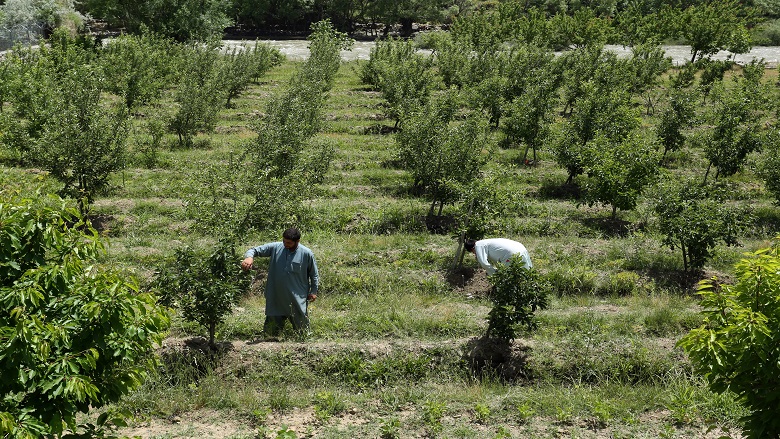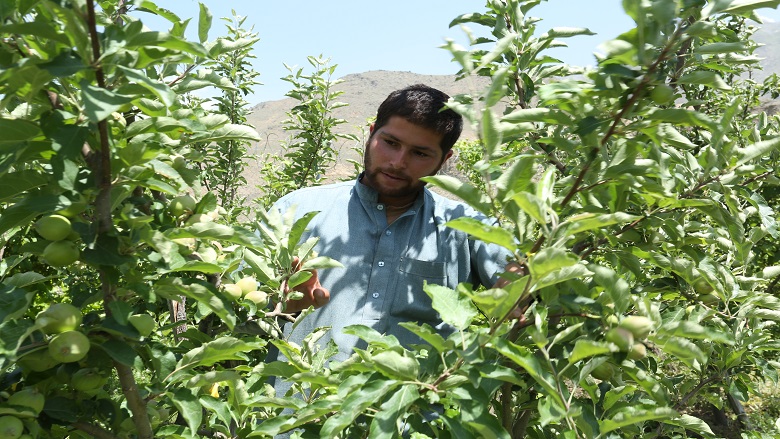BAZARAK DISTRICT, Panjshir Province – Decades of using the same agricultural methods had left Mohammad Yousuf, 42, frustrated. He was under constant pressure to produce more since his harvest was always less than expected. The traditional methods he had learned from his father was for many years the only way of cultivation and harvesting he knew.
“I used to cultivate wheat and corn, but I didn’t earn much,” says Yousuf, who has been a farmer for more than 20 years. He owns three jeribs (about 0.6 hectares) of farmland, a small plot from which he has to provide for nine family members. Although Yousuf is an experienced farmer and harvested an average of 600 kilos of wheat a year, the earnings were not enough to feed his family. He had to work as a day laborer as well to keep afloat.
In 2016, he found out about the National Horticulture and Livestock Project (NHLP) through his neighbor, Mohammad Akbar, 45. With the support of NHLP, he planted a two-jerib apple orchard in May 2016. This was the beginning of an entirely new journey. “, compared with what I was making with wheat,” says Yousuf enthusiastically.
He and Akbar live in Malaspa village in the Bazarak district of Panjshir Province in central Afghanistan. Akbar has planted five jeribs (about 1 hectare) of grapes, almonds, apples, peaches, and cherries over the past four years with NHLP’s help.
“The horticulture system used by NHLP is very different from the one we had,” says Akbar, who will harvest his orchard this year. “.”


